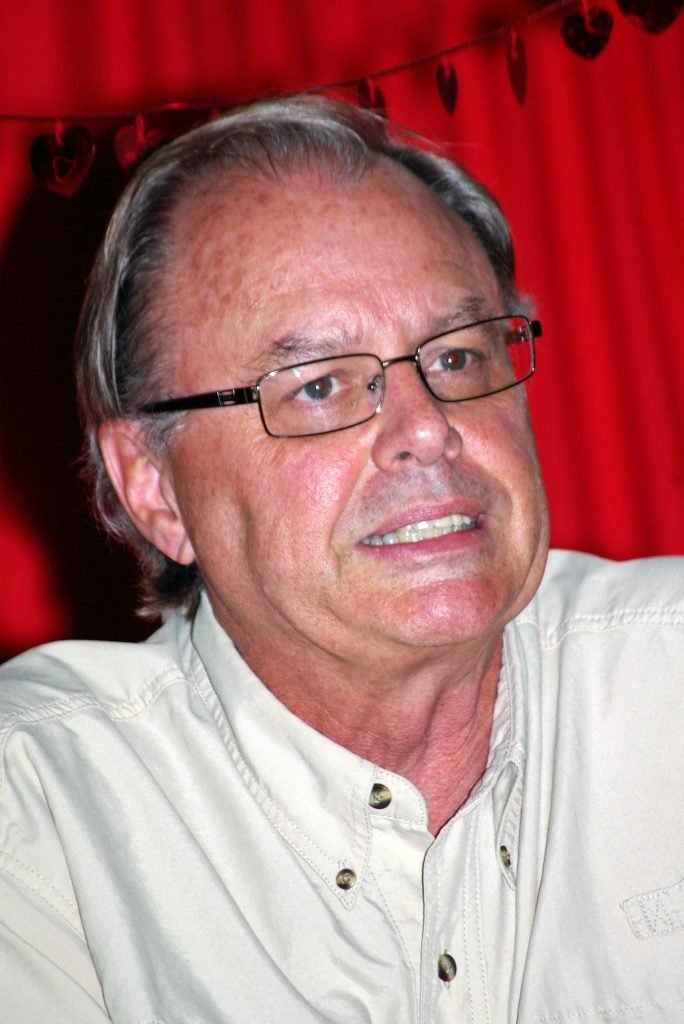Martin C. Barry

Although it’s been decades since Trevor Ferguson, a.k.a. John Farrow, put Park Extension behind to become a novelist and detective fiction writer, the neighbourhood lives on in perpetuity in his literary output.
“In Park Extension many streets bore bold French names,” Ferguson, who goes under the pseudonym John Farrow, writes in Farrow’s latest work, Ball Park (published by Severn House of Great Britain).
His old haunts
“Champagneur. D’Anvers. L’Acadie. Querbes. Jean Talon. Saint Roch. These ran adjacent to streets reflecting a Scots and English heritage. Bloomfield. Ogilvy. Stuart. Hutchison. Ball. Wiseman. A mishmash of centuries-old allegiances.
“Those who gathered in Ball Park represented a broader world than that of the ancient battling nations of France and Great Britain. Kwang-Sun. Rahim. Padmini. Hideaki. Tomas. Dawida. Sanjay. Youthful men and women in a new world that proffered an open invitation to be explored. A world as baffling as it was inclined toward promise; a venture contradictory in its inducements and perils.”
Memories of Park Ex
The passage represents a rare moment in Ball Park when Ferguson/Farrow seems to reminisce warmly about his past roots, and achieves a level of literary style beyond the hardboiled police pulp fiction genre he’s become more accustomed to since assuming his John Farrow persona.
On p. 250 of Ball Park, he describes the notorious “fence” along l’Acadie Blvd. in western Park Extension that has separated the community from Town of Mount Royal since the early 1960s.
The l’Acadie fence
“Something about that divide struck him,” he writes, referring to Montreal Police detective Émile Cinq-Mars, the protagonist of his successful police novels. “Poor on one side, nouveau riche on the other. Immigrants on one side, established generations on the other. High-density traffic and racket alongside peace and calm. One side denoted by struggle, the other by privilege. The divide spoke to him.”
In a recent e-mail exchange with Nouvelles Parc Extension News, Ferguson explained some of the differences between the books he wrote under his own name and those he wrote later as Farrow.
“Novels I’ve written of Park Ex, such as Onyx John (1985) and The True Life of Sparrow Drinkwater (1993), afforded me much more time to dwell on the nature of the community,” he said. “You’d find many descriptive passages in those books. Ball Park is written lean; it doesn’t lend itself to lengthy tangents. Park Ex is still prevalent in the background.
Remembers Park Ex
“The war time houses below d’Anvers on Bloomfield, the infamous fence between Park Ex and The Town, sliding behind buses on snow: all Park Ex scenes … I have great affection for Park Ex, and I’m fascinated by its changes through time. That’s not the same as missing it; but I’m glad that the district is part of me.”
Farrow/Ferguson also recalled a time during his later years living in Park Extension in the 1970s when he and the woman he would eventually marry ran a community newspaper.
“I was hired by the young woman who would become my wife to create a newspaper because I was already devoted to writing,” he said. “Doing our modest paper was a great way to be writing for a living, as short-lived as that was. The main benefit to me, of course, was that I fell in love with my boss, and married her!
Ran a local newspaper
“But I interviewed quite a number of people in Park Ex in those days and any such experience is beneficial to a writer’s development. Back then, I not only wrote the paper, I also printed it and delivered it to stores, and tried to find advertisers. A shoe-string operation.
“The most memorable article for me, and many others apparently, had to do with a dog show. I wrote it up from the perspective of my dog, and folks got a kick out of that. I learned though, that the paper became marginally important in the community, especially when someone had a gripe with what I’d written or failed to include.”







